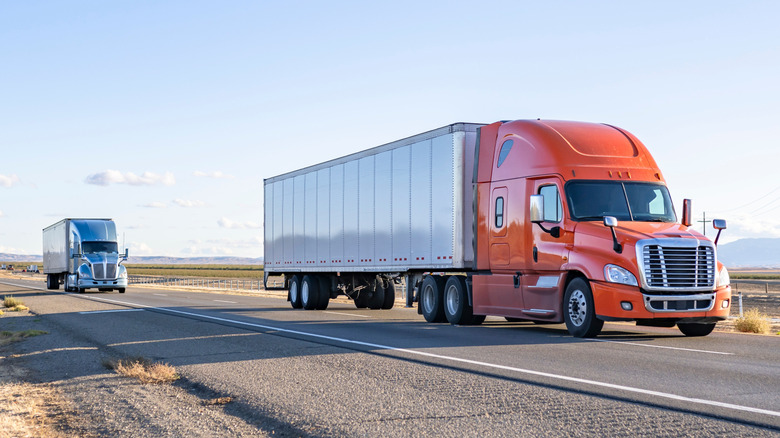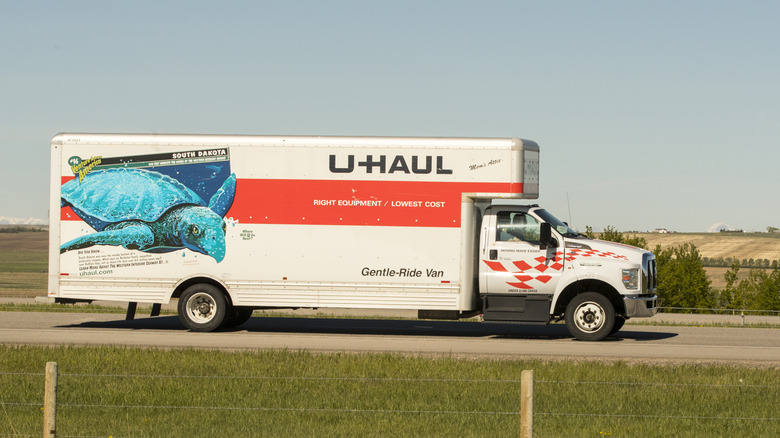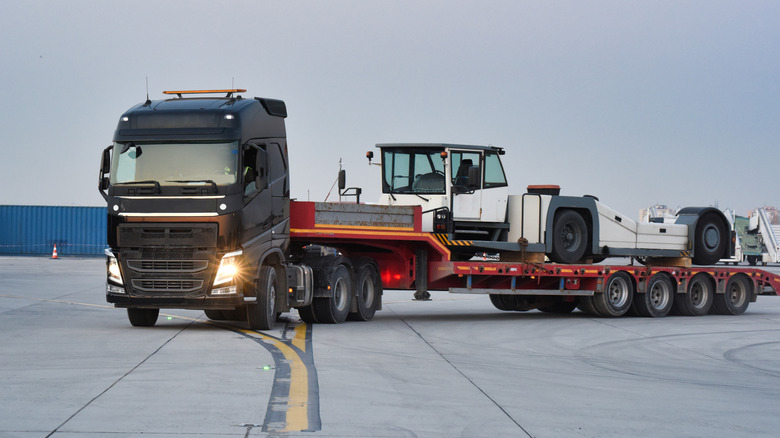
Semi-truck and full truck. There are terms that get tossed around often, and it's easy to think of them as opposites or, to some, even interchangeable. Well, not quite. One is an actual technical classification, while the other is more of a casual description, and this is where the confusion begins. When someone says full truck, chances are, they are referring to what's technically known as a straight truck, which is simply a vehicle whose cabin, engine, and cargo space all permanently sit on the same
chassis.
This makes them simpler to operate than semis, especially in tight areas such as city streets. You've probably seen them a thousand times -- dump trucks, delivery box trucks, and pickup trucks are great examples of straight trucks.
As for a semi-truck, or more precisely, a semi-trailer truck, things are a little different. Unlike straight trucks, where everything is one solid unit, a semi-trailer truck consists of two main parts: The front tractor that carries the engine and the driver's cab, and the detachable semi-trailer that holds the cargo. The semi-trailer doesn't have its own front wheels and can't move without the tractor, which explains the semi part.
The tractor supports the trailer's front end through what's known as a fifth-wheel coupling, which rests on the tractor's rear axles. Owing to this configuration where the two pivot at the hitch, backing up a semi requires more skill than required to reverse a rigid U-Haul moving truck.
Read more: Fans Say These Are The 5 Best Years For Cummins Diesel Engines
Differences Beyond Configuration

Sure, the way semis and full trucks are put together is the obvious difference, but it's not the only one. Both have their own share of strengths and quirks to the road, and that could mean differences, from where each one works best to licensing requirements.
First of all, because semi-trucks are built for long-distance haulage of bulky cargo often across state lines, you must have a Class A commercial driver's license to operate one in the U.S., which simply means taking some extra training classes. Even so, it's a whole different case with straight trucks. There are some you're allowed to drive with a Class B CDL or even a standard DL, depending on the truck size and local laws.
Then comes cargo capacity. Semi-trucks reign supreme in long-distance freight, mainly because their trailers car carry far heavier loads than an average full truck. If being on the highway is the job, semis are the real deal.
However, maneuvering the same 53-foot trailer on a narrow street or under city bridges with low clearances can prove a pain. Straight trucks do better in that regard, and that's why you're likely to see them all over cities delivering furniture, packages, or hauling light cargo for contractors and businesses of all kinds.
Which One's Right For The Job?

That depends on the job. If you run an operation that requires long-distance shipping, chances are, you need a semi. Semis are built for exactly that kind of work -- carrying heavy, high-volume goods for hundreds of miles across state lines.
You could argue they are the backbone of regional and cross-country logistics operations in the U.S., and beyond. In fact, according to the American Trucking Associations, trucks moved 66.5% of surface trade between the U.S. and Canada, and an astounding 84% of goods across the Mexican border in 2023 alone.
Thanks to powerful diesel engines, they can move just about anything, from groceries headed for a distribution center, to auto parts bound for assembly plants, and even bulldozers and motor graders when needed. Here's the kicker: Their trailers can be swapped out in minutes, which makes them a favorite option for fleet operations where every second counts, such as grocery distribution or event logistics.
However, not every job needs that kind of range and capacity. Actually, most don't, and this is where straight trucks make sense. Need to deliver furniture across town? Or transport some steel bars to a local construction site? Or maybe you manage a bakery route that makes several stops in the city? A straight truck gets the job done. No need to hook up a trailer, no special licensing required, and much less stress to operate in tight turns or city traffic.
Want the latest in tech and auto trends? Subscribe to our free newsletter for the latest headlines, expert guides, and how-to tips, one email at a time.
Read the original article on SlashGear.













